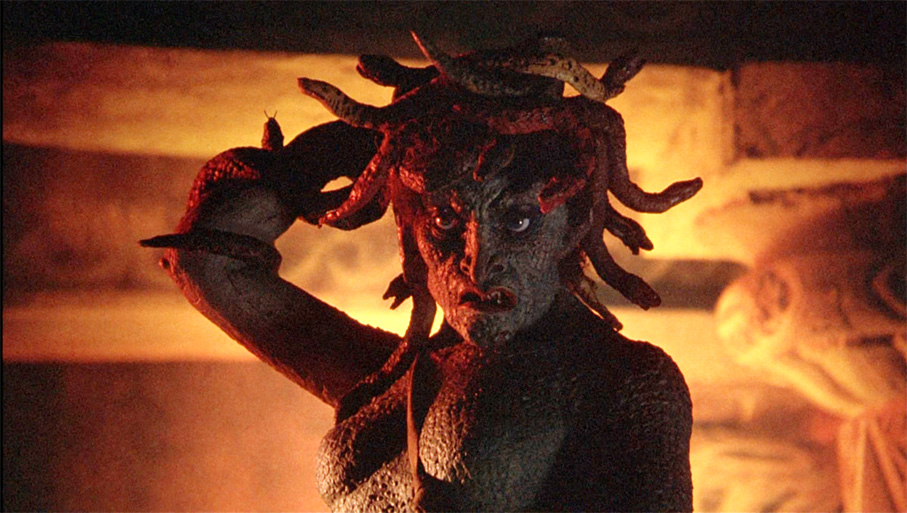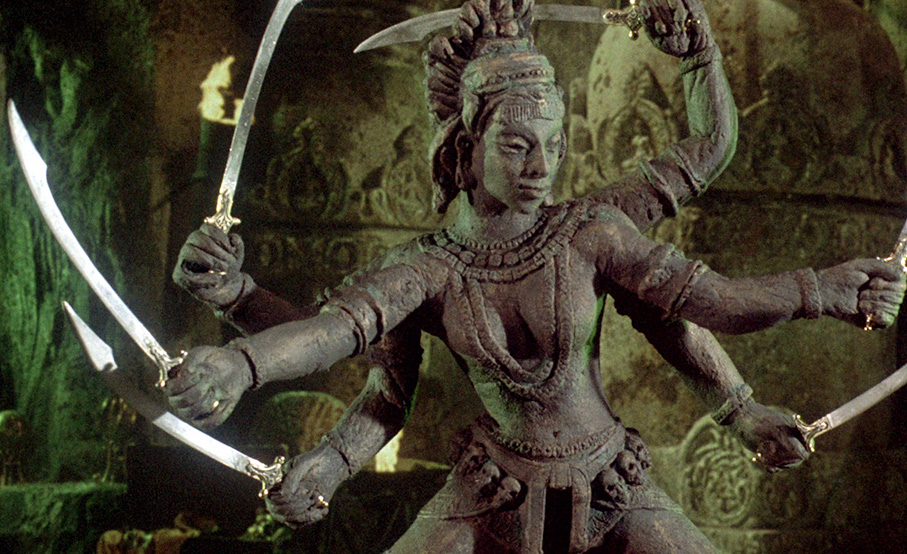I’m currently in the process of putting the finishing touches to one of those reviews that's taken all week but just cannot be hurried, in part because the films in question demand more than a quick overview, but also because this three-film set is resplendent with quality special features. It’s when I encounter a release like this that I secretly wish I had no familial responsibilities and was financially secure enough to stuff my day job and do this full-time. In case you’ve not realised yet, the release I’m talking about is the Sinbad Trilogy from Indicator, a glorious box set that has allowed me to revisit all three films in the space of two days, and remind myself of what it was about them that prompted me to fall in love with the work of master visual effects man and stop motion animator, Ray Harryhausen.
It’s hard to be sure if I first discovered Harryhausen’s work through the 1958 The Seventh Voyage of Sinbad or the 1963 Jason and the Argonauts. For me, they are blood brothers, giants in the world of cinematic fantasy and similar enough in style, content and storytelling for the latter to almost qualify as a direct follow-up to the former, despite some key differences in characters and source material. If I was compiling a list of sublime double-bills, this one would be in there, and would sit somewhere near the top. As fantasy adventure tales they’re an absolute joy, but despite the stout work of directors Nathan Juran and Don Chaffey and a pair of wonderful scores by Bernard Herrmann, it’s Harryhausen’s creature design and animation for which both films are primarily remembered. It’s an element that I’ll be exploring in more detail in my Sinbad Trilogy review, but watching the films again, I did find myself wondering –perhaps condescendingly, hopefully not – whether someone raised on the photographic perfection and seamless compositing of computer generated effects would respond to these films – whose animation and compositing I’ll freely admit are clearly visible – as enthusiastically as I continue to do.

This ability or otherwise to contextualise a film to the time and place in which it was made has remained a rite of passage for each new generation of film fans. I’m no exception. I’m guessing that most of us are first seduced by the films of our day, which tend to be the ones that play in our local cinemas, and we then tend to work our way back using whatever mediums are available to us. For the younger version of me, this meant television and, at a later date, some of London’s then-fine independent cinemas, but now there are almost no barriers and thus no excuses for not hunting out older films and tracing the careers of filmmakers and the trajectory of genres from their birth to the present day. But it’s hard not to make comparative judgements, particularly if an element of the film in question has been dated by changing times or evolving technology.
Yet there’s so much more to it than that. A fine example is the 1981 Clash of the Titans, which was produced by Harryhausen and his regular collaborator Charles H. Schneer and features Harryhausen’s final visual effects work for cinema. The 2010 remake had a budget eight times that of the original, more sophisticated animation, photorealistic creatures and invisible compositing, yet the film still absolutely pales in comparison to the original. The CG of the remake may be more superficially realistic, but if anyone tries to tell you that this makes for a more immersive experience, sit them down in front of the original’s confrontation between Perseus and his men and Harryhausen’s demonic Medusa – when I first saw this in the cinema, I was nearly crapping myself with terror.
What I do find myself doing with Harryhausen’s work is marvelling at his artistry and technical skill in a way I rarely if ever do with computer generated creations. This is partly down to the fact that for a good many years, Harryhausen was the sole torch-bearer for fantasy-based stop-motion animation and an innovator to boot. He also worked alone, designing and creating the creatures himself and animating them alone in his studio without assistance from others. As John Landis points out in an extra on this release, Harrhausen was a rare if not unique case of a visual effects designer and animator as auteur – no matter who was in the director’s chair, these are and were always Ray Harryhausen films. Computer generated animation has as yet to produce such a star name, in part because there are now so many practitioners of this particular art, while its ubiquity and the increasing sophistication of CG software has made us all a little blasé about its usage – in an age when computer generated graphics and effects can be employed to make almost anything look real, it’s nigh-on impossible for even the most inventive GC creation to stand out from an increasingly busy crowd.

Which brings me back to my original point. As someone who grew up mesmerised by Harryhausen’s films, I genuinely cannot imagine how someone for whom CG is the norm will respond to them. A few years ago I was working with a group of media students who were sent out with cameras and asked to interview anyone on campus about a subject of their choosing. One group elected to ask people of different ages whether they preferred older or more recent films, in an attempt to gauge whether there was a generational divide on this issue. Unsurprisingly, perhaps, the vast majority of younger interviewees preferred modern films, but by far the most popular reason they gave was that these films had better special effects. I kid you not. I’d like to think that this rather shallow judgement of a film’s quality is something that that these interviewees would get past once they see a wider range of films (assuming that they do, of course). But just as I learned to appreciate the achievements of silent and early sound cinema by contextualising them to the technology, trends and audience preferences of their day, I’d hope that even a young audience that has gorged itself on CG-laden superhero movies could see past the visual imperfections of the photographic process used to composite the animation and live action elements together, and warm to just what Harryhausen and his collaborators achieved. After all, in our eager celebration of his wonderful creature design and animation, it’s easy to forget that these were star components of hugely entertaining adventure movies that can be enjoyed as much for their characters, storylines, pacing and even music scores as for creature sequences for which they are still rightly celebrated.
My detailed review of The Sinbad Trilogy will be posted tomorrow. |